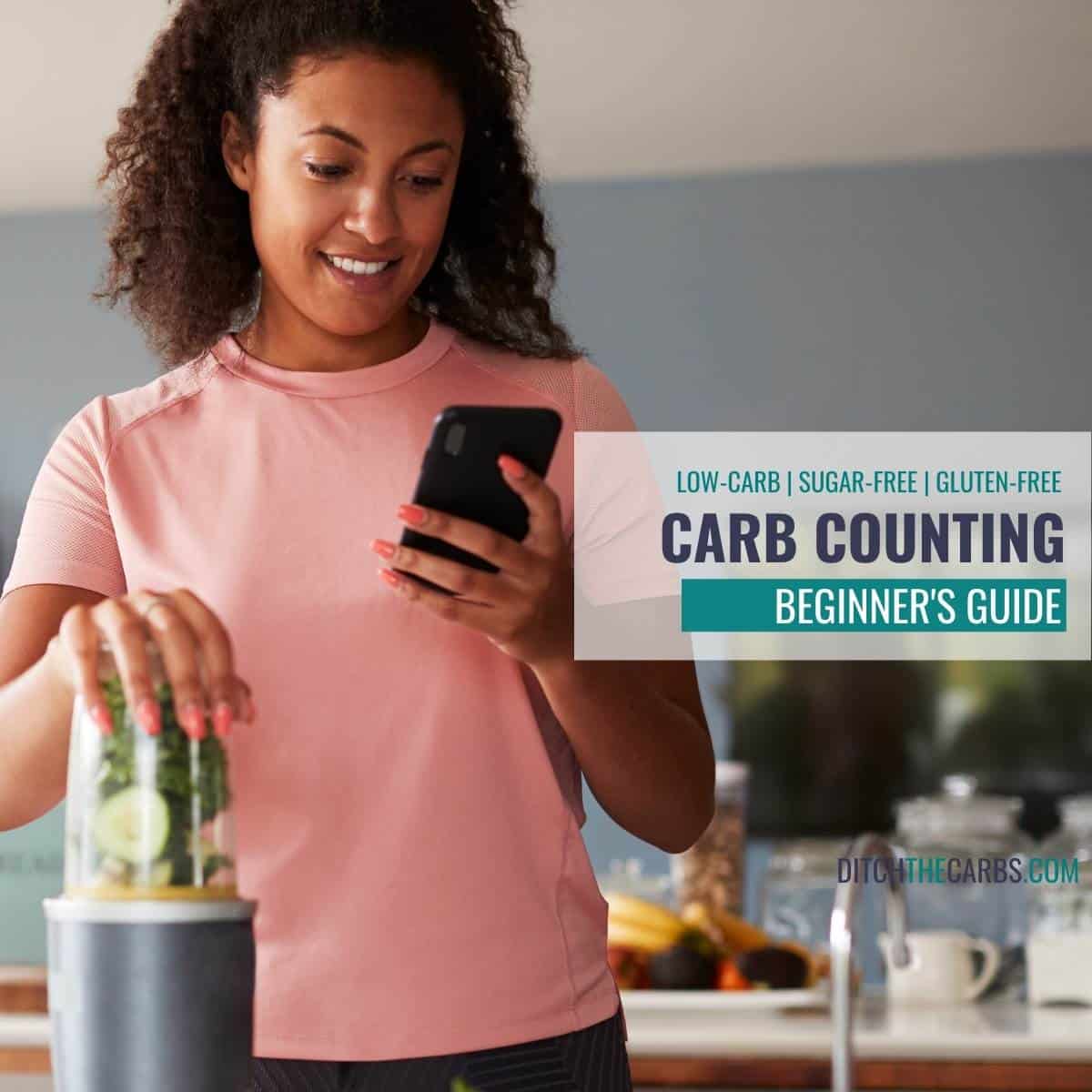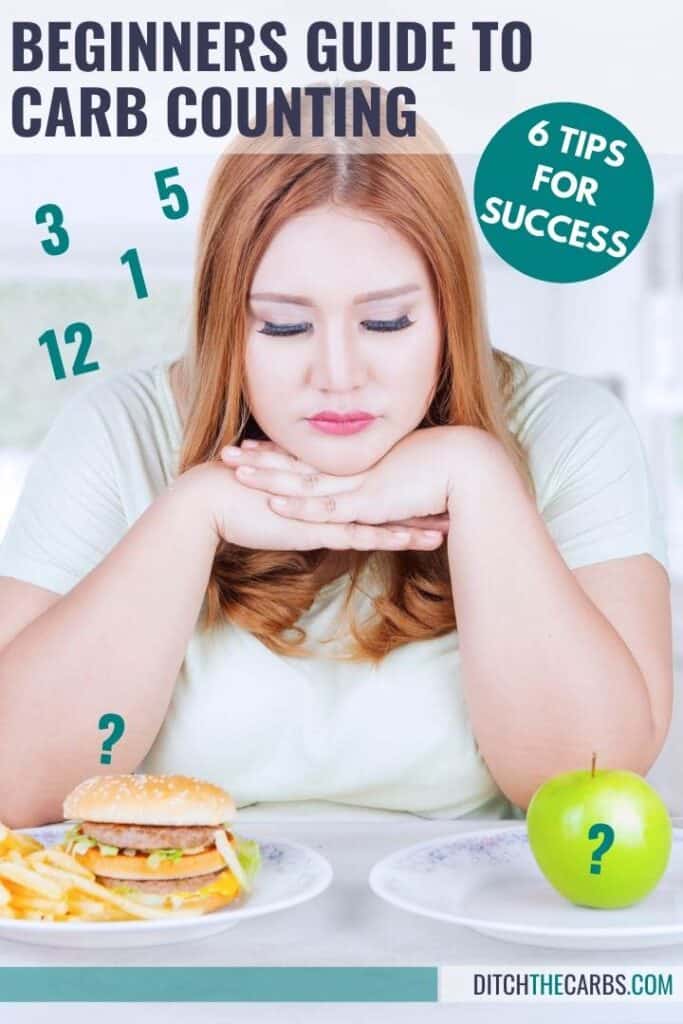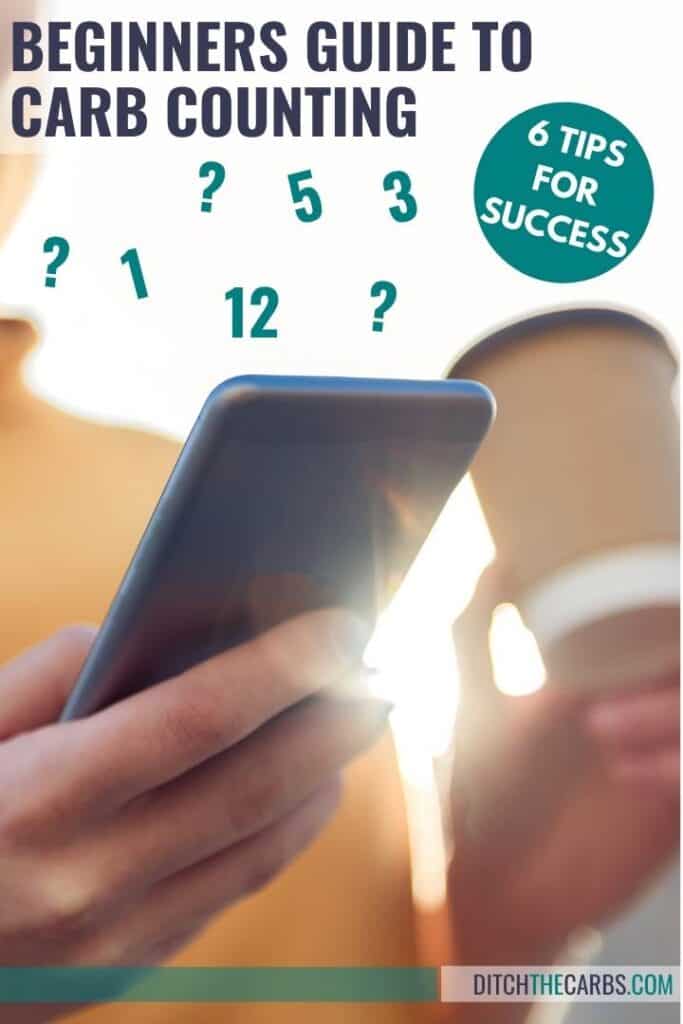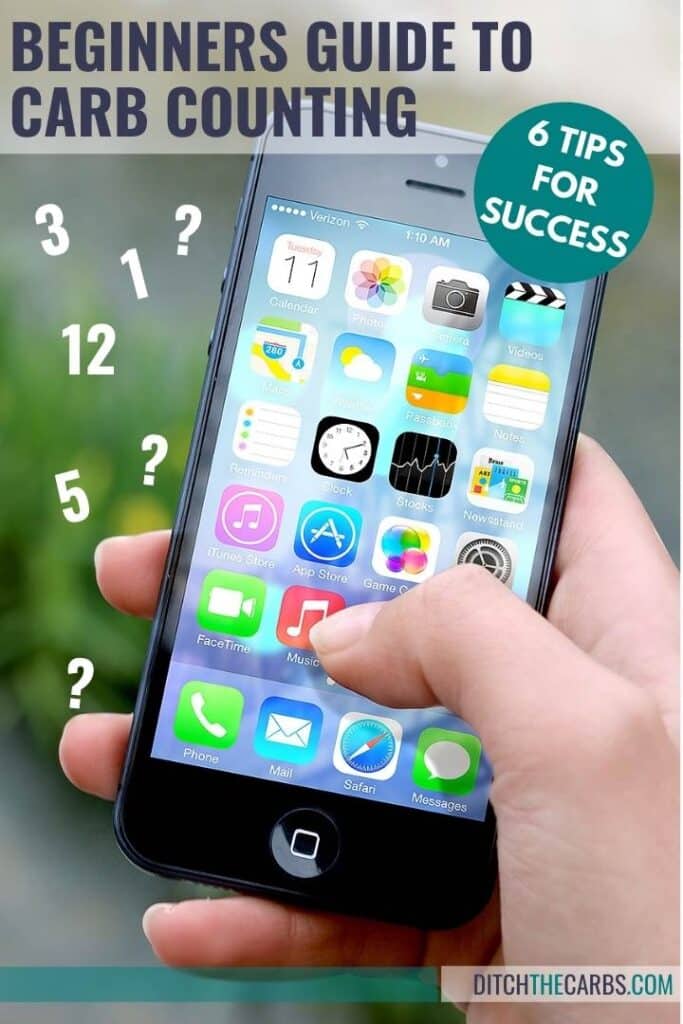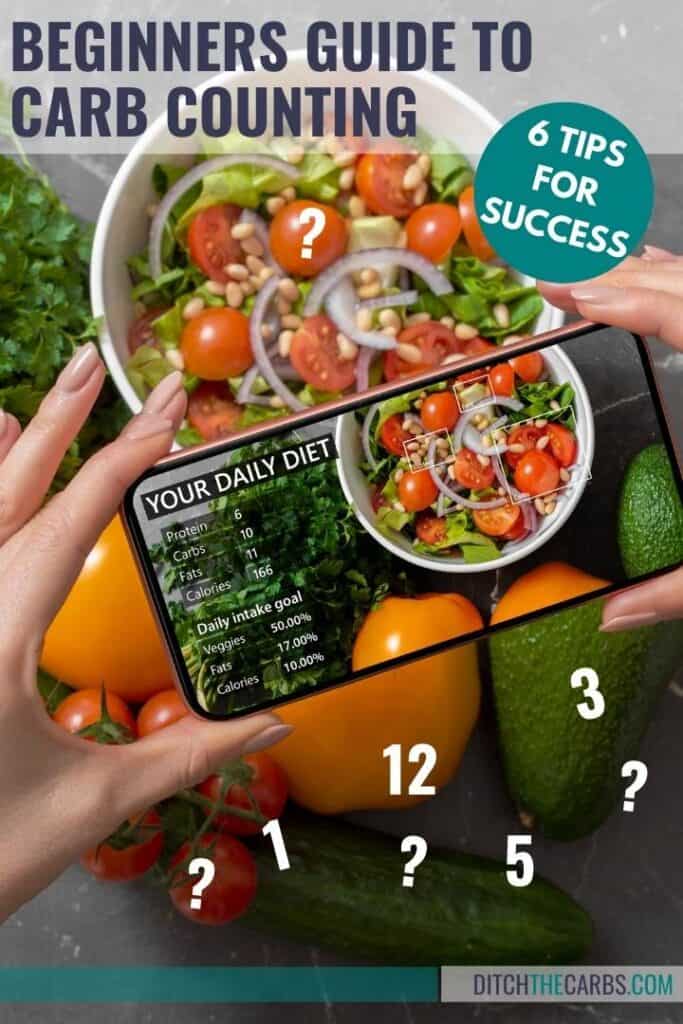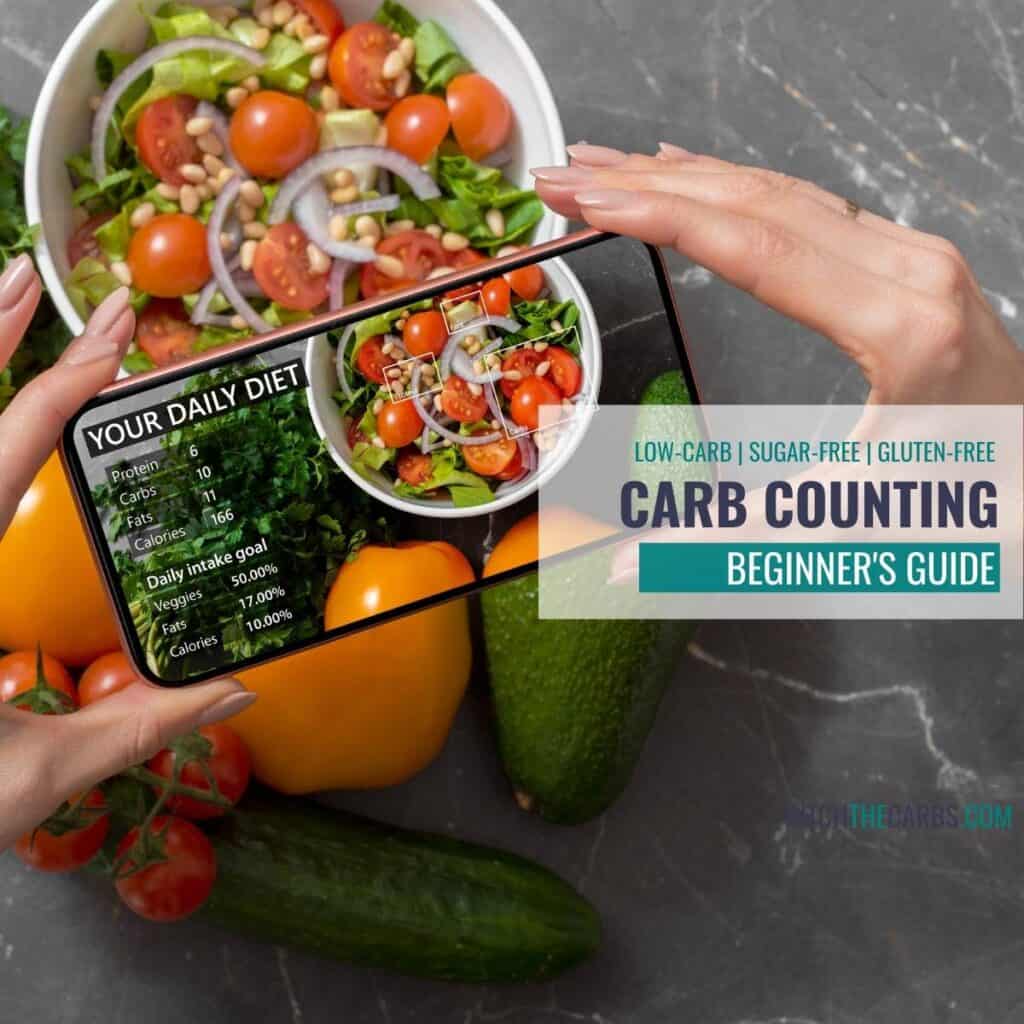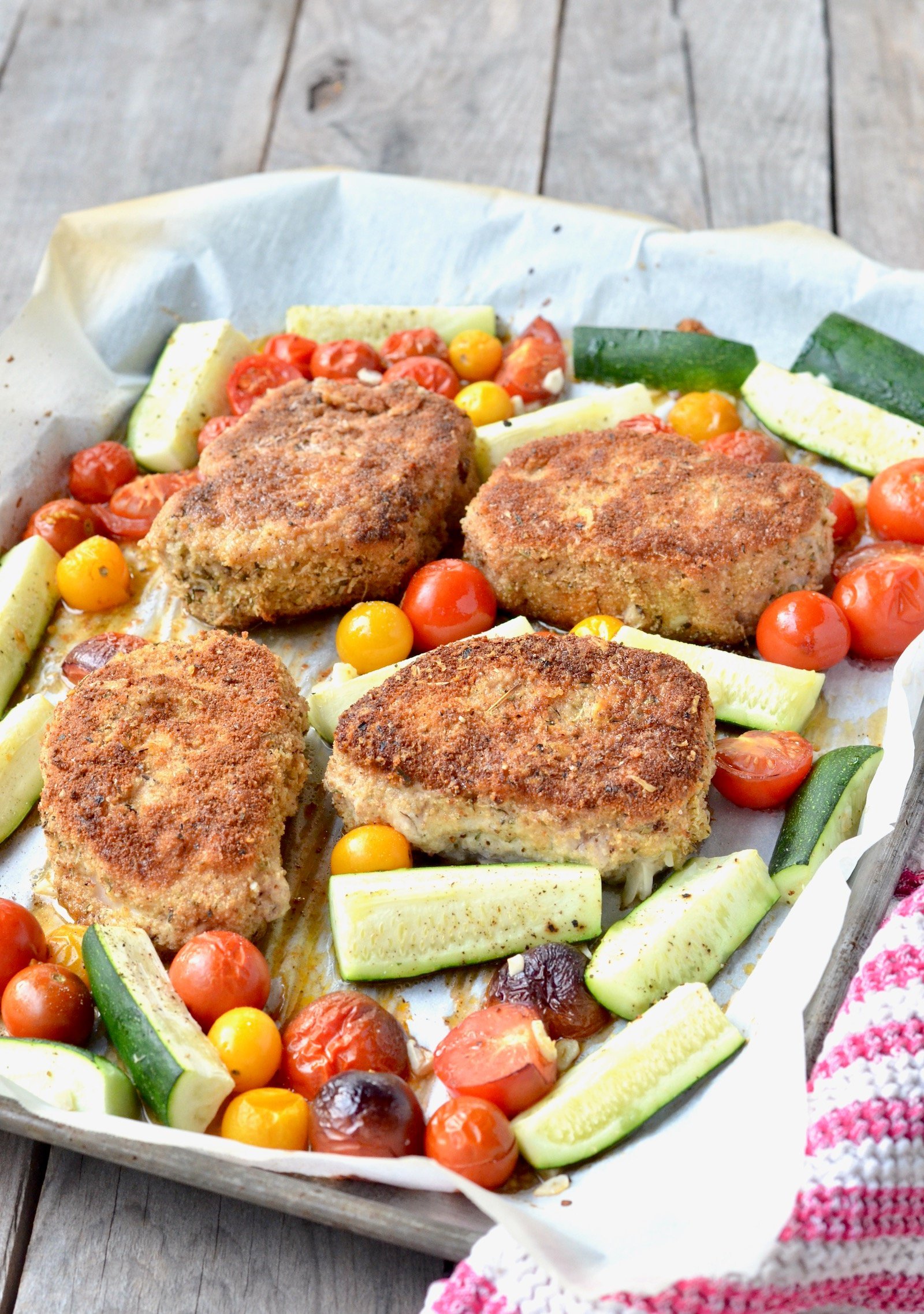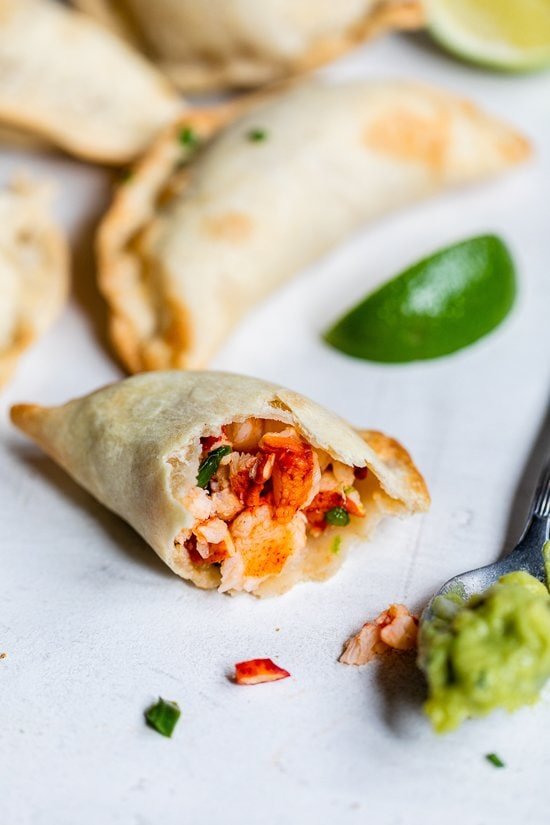How to Count Carbs: The Beginners Guide to Carb Counting
When it comes to successfully losing weight, controlling your carbohydrate intake is crucial. This means you’ll need to do some carb counting. But that doesn’t mean you have to count carbs every day. Confused? Let me help you.
If learning how to count carbs sounds hard (or overwhelming) – don’t worry. Learn how to COUNT carbs and how to CALCULATE your carb/fat/protein goals with our FREE macro calculator.
After all, carbs are one of the three macronutrients that have the greatest impact on body glucose – too much of this can result in insulin resistance, making weight loss extremely difficult.
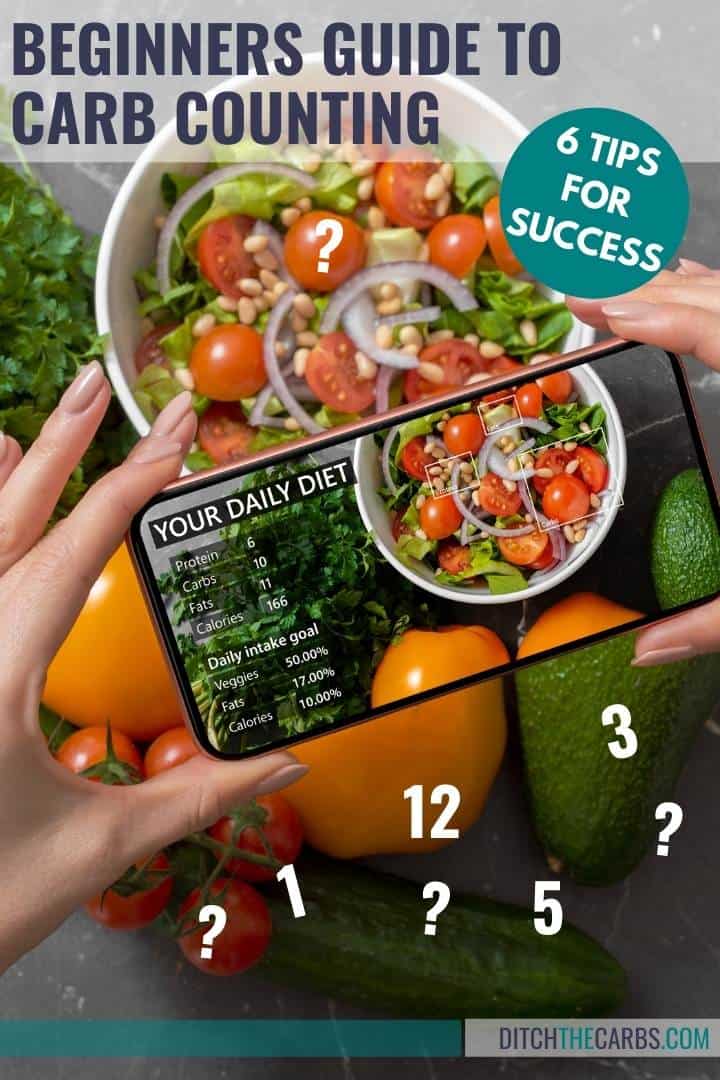
Jump to:
Why do you need to count carbs?
Carb counting is regularly used by those who need to control their blood glucose quite tightly such as type 1 or 2 diabetics, those who want/need to be in nutritional ketosis, to help reverse insulin resistance and those who want to control their hunger and fat-burning ability.
But whether you are needing to limit carbs for medical reasons or weight loss, the only way to do so is by actively counting carbs in foods and the quantities of those foods you choose to consume.
6 tips: How do I start counting carbs?
Although at first, it may seem like a daunting task to count carbs, when you start practising it on a daily basis it becomes much easier. Plus, it is an extremely helpful tool for managing your weight loss and general health.
Tip #1: Learn To Identify Which Foods Are Naturally High In Carbohydrates

Some foods are naturally higher in carb content than others and it’s very important to start to get a good grasp of knowledge on this, particularly when it comes to whole foods that won’t have nutritional labels attached to them in your local grocery stores such as potatoes or bananas.
Once you know which foods are high in carbs, you can either find low-carb alternatives or you can reduce the quantity of the higher carb foods when consuming them.
After a while, you will instinctively know which foods to avoid and which to enjoy.
The longer you live low-carb or keto, the less you need to carb count. Time spent at the beginning reading labels or looking at nutritional values is time well spent.
Don’t skip this steep learning curve.
Tip #2: Recognise Where Carbs Hide

Carbohydrates are easily hidden in sauces, dressings and other condiments, especially those that have been sweetened. It’s one of the reasons that I strongly advocate for making your own homemade low-carb sauces.
Sweetened yoghurts and milks are also high in carbohydrates so reading the nutritional label on these items is a must!
And if you think the only sugar you need to look for is … sugar, think again There are over 50 names of sugar and the sneaky food manufacturers will use a variety of sugars so they fall lower in the list of ingredients to confuse you.
So honey, agave, fruit crystals, fruit syrup, apple concentrate, organic coconut nectar, HFCS, corn syrup solids, beet sugar … they’re all sugar.
It’s called “confusion marketing”.
Sugar is sugar no matter what you call it.
Tip #3: Choose Quality Carbs

When it comes to the keto diet, both quality of food and quantity of food matters and both should be considered.
If you only count carb values but don’t care where those carbs are coming from, you are considered to follow a dirty keto diet.
If however, you count carb values AND you ensure your carbs are from whole food nutrient-dense sources, you are considered to follow a clean keto diet.
Instead of getting your carb intake for the day through refined foods such as white flour, white bread, white rice, pastries, sodas, snacks, pasta, sweets, and breakfast cereals, opt for whole foods that are nutrient-dense and will keep you satiated for longer.
These types of foods include leafy green vegetables, berries, and other nutritious foods that offer a high percentage of fiber.
The reason for choosing high-quality carbs is the wide range of nutrients that you will benefit from getting by consuming them. These include essential amino acids, essential fatty acids, vitamins, minerals, micronutrients, and health-promoting plant chemicals called phytonutrients which our bodies cannot make. These help to maintain a healthy immune system.
Quality carbs are also usually high in fiber which aids to slow the digestion of sugars and starches, preventing spikes in blood sugar and insulin closely associated with diabetes, heart disease and weight gain!
Tip #4: Set Your Daily Carb Limit
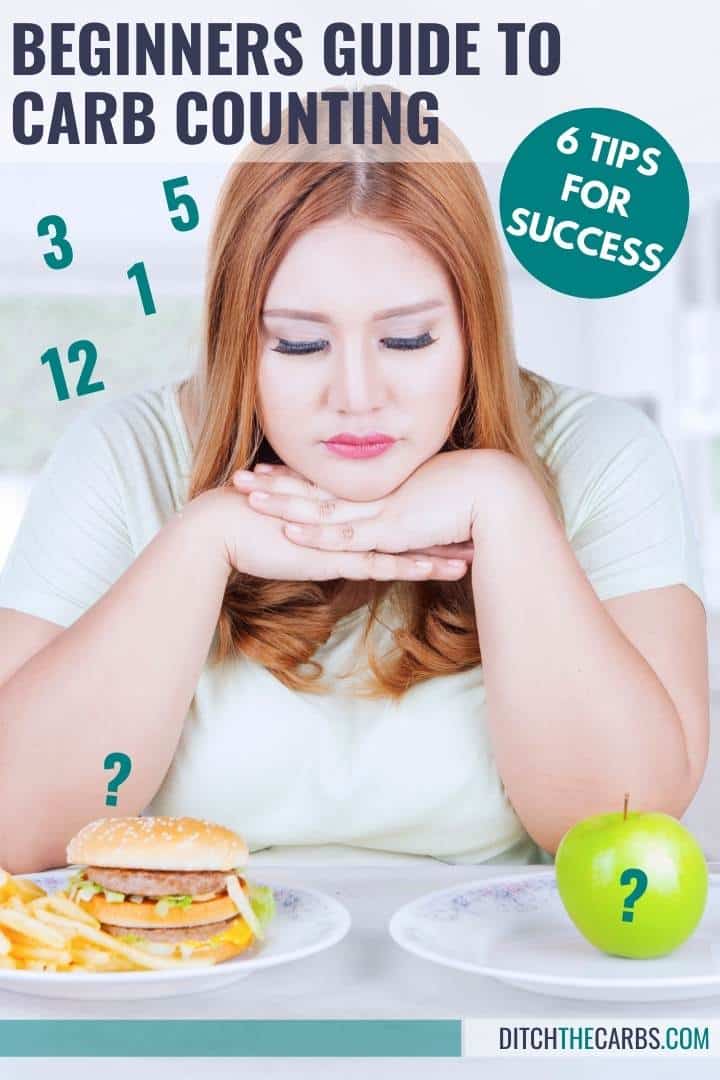
Setting your daily carb limit depends on what you want to achieve as well as the type of diet you are following.
If you are unsure of how many carbs you should be eating per day, consider the following categories of carb levels. Generally, a low-carb diet is considered to be:
- <100g/day = moderate low-carb
- <50g/day = low-carb
- <20g/day = keto
Many readers like to begin by simply reducing their carbs to a level that is sustainable and weight loss still occurs.
Tip #5: Find A Carb Counting Method That Suits You

Some people love numbers while others stay well clear.
If you love crunching numbers then, by all means, do the various recipe calculations, factoring ingredient quantities, nutritional labels etc. But if this seems overwhelming to you, take note that there are many other methods at your disposal.
Tip #6: Test and Tweak Your Carb Counting Efforts

Once you have started to count your carbs on a regular basis, measure your progress, evaluate and then adjust if required.
For weight-loss purposes, you can measure your weight loss as the desired result of carb counting by recording your starting weight and incremental weight recordings going forward or measurements of body areas with a measuring tape.
Keeping a journal of how you feel is another great idea as you may start to see certain patterns that require adaptation.
For those who prefer the digital route for recording stats and progress, there are countless carb counting apps online. Some free while others come at a small price. All of them are designed to make the carb counting process that much easier.
Carb counting – serving size vs portion size
A serving size is the portion of food with calculated information on the food label.
If your portion size differs to the serving size then you will need to adjust the carb count accordingly.
I recommend calculating portion sizes when you have access to measuring tools such as a food scale or measuring cups otherwise you can estimate based on your fist being about 1 cup and a handful being about 1/2 cup.
The Plate Method
To use the plate method, divide your plate in half and then divide one half in half. You should then end up with one large section (for non-starchy vegetables and greens) and two smaller sections (one for protein and the other for quality fats).
Hire someone to do the math for you
You could consult a dietician or healthcare practitioner to assist you in counting your carbs by creating a meal plan specific to your weight loss or health goals and then to track your progress through follow-up consultations.
Even with this method though, you will be required to measure your food when preparing recipes that have been designed for you which is good practice for getting to learn visually what your portions should be and what foods you should work with.
Use online resources such as carb counting apps or carb counting charts
As mentioned previously, there are many carb counting apps that you can use which will track your daily carb intake by simply adding the foods consumed. An alternative is to make use of a carb counting chart that you can download and refer to when selecting foods.
If you’re interested in apps to help you with counting carbs, keep reading as there is an entire section below showing you the best apps!
Should you count calories or count carbs to lose weight?

The two common approaches to losing weight are either by counting calories or carb counting carb.
For calorie counting, it’s total calories in versus total calories out and in order to lose weight, you need to have burned more calories than consumed. By being in a certain caloric deficit per day, you may see a corresponding weight loss over the course of that particular week.
But this is a flawed system and does not take into consideration the effect food has on your hunger hormones and your fat storage hormones.
Weight gain is a hormone imbalance, not a calorie imbalance.
The keto diet places emphasis on consuming limited quality carbohydrates within the limit of 20 grams per day to reach and maintain a state of ketosis (burning fat for fuel instead of sugar) which results in weight loss.
While each weight-loss method has its own pros and cons, there are two main reasons why I suggest that a carbohydrate counting method is superior to a calorie counting method:
Stay Within the Proper Macronutrients
A risk associated with the total calories method is the potential to lose sight of an optimal macronutrient split for efficient fat burning.
In other words, someone could still be in a calorie deficit but be consuming higher amounts of carbs and lower amounts of healthy fats compared to the keto follower.
In the former situation, this could result in experiences of cravings and hunger which could make the calorie deficit method unsustainable over the long-term and slow the metabolism.
More Easily Naviagte Through Plateaus
At certain points of weight loss, plateaus are experienced. When this happens, a keto dieter can easily adjust their carb content.
With the calorie deficit method, the metabolism eventually slows down as more calories are reduced which then makes further weight loss very difficult. It’s known as the “calorie deficit paradox”.
Can you eat carbs and still lose weight?

Yes, definitely! The keto diet is about eating quality foods within optimal quantities to facilitate nutritional ketosis which is when your body switches from burning sugars as fuel to burning fat.
These quality foods referred to also include whole, nutrient-dense carbohydrates that are high in fiber.
As the keto diet limits carbs to around 20 grams per day, it’s clear that carbs are very much still a part of the keto diet, albeit in smaller, healthier quantities that facilitate efficient fat burning.
Hod do you count carbs for a diabetic?

Maintaining healthy normal stable levels of blood sugar is vitally important for anyone that has type 1 or 2 diabetes.
Many diabetics also test their blood sugars following certain foods to see how they, as an individual, react. For example, the sweeteners in many low-carb or keto bars may not affect the majority or consumers, but for some, the sweeteners make their blood glucose sky rocket.
Since one of the best-known ways to maintain good blood sugar levels is through low-carb consumption, it’s a no-brainer that the keto diet and the practice of carb counting are extremely beneficial to diabetics.
The ideal carb intake for those with diabetes is somewhat controversial yet studies have shown incredible improvements in blood sugar levels and weight loss among diabetics who were limited to 20 grams of carbs per day.
With this said, it is always recommended to consult your medical doctor prior to making any dietary change, particularly if you have any existing medical conditions.
Which is the best free carb counting app?
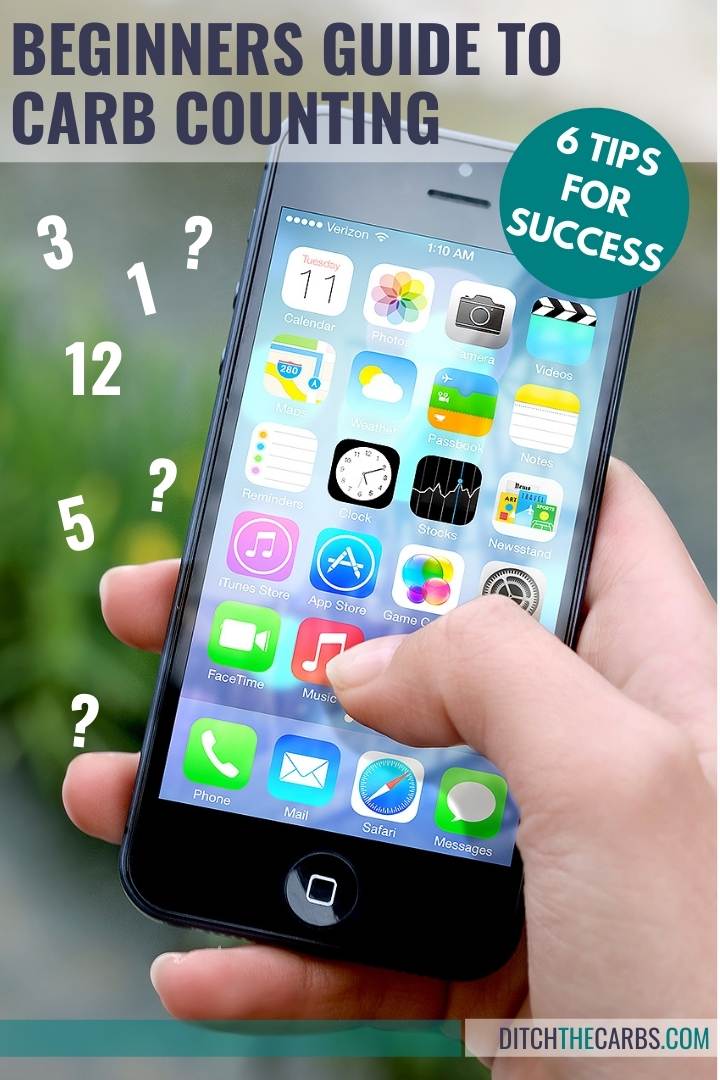
With so many apps available online these days, it’s hard to cut through the noise and find simple yet effective and accurate apps that suit individual needs – in this case, counting carbs!
My review of the 5 most common (not necessarily the best) carb counting apps to consider. (Opinions are my own and are not influenced by any company)
Cronometer.com – The No.1 App -For Simplicity And Accuracy

The most popular and incredibly accurate app that:
– has a ketogenic macro calculator that will give you carb, fat and protein targets for your current body weight.
– track your MACROnutrients and MICROnutrients.
– monitor your blood glucose, ketone levels, weight, heart rate and even blood pressure.
You can quickly and accurately track your carbs, fat, protein PLUS it also gives you nutrition scores. You will see if you have hit your daily target for each vitamin, mineral, lipids, and amino acids.
Accurate – Easy – Set goals – Set macros – Ketogenic Calculator – Monitor Biomarkers
KETODiet App – trusted and accurate
With recipes, articles, expert advice and more, KetoDiet App has everything you need and most importantly, is ACCURATE.
They refuse to crowdsource nutritional data, which is usually incorrect.
Accurate – Easy – Set macros – Recipes – Articles
Carb Manager – can be clunky and constantly wants you to upgrade or buy books
The free version allows you to track carbs and offers easy to understand graphs, however, if you are looking for other health tracking functions then you’ll need to upgrade to the premium option.
Readers have told me that the number of upsells and regular marketing emails annoying for the user. Crowdsourcing of nutritional data makes many of the values incorrect.
Easy – Set macros – May have inaccuracies – Many upsells
MyFitnessPal – inaccurate and crowdsources data
This app is great for keeping track of all of your macronutrients but it can be somewhat cumbersome when trying to add various food items to the food diary.
Crowdsourcing of nutritional data makes many of the values incorrect. Especially when the carb values aren’t clear whether they are TOTAL or NET carbs. So my readers have subtracted fibre from an already NET value, only to achieve a negative carb count, which is impossible.
Easy – Set macros – May have inaccuracies – Many upsells
What to do if you hate counting carbs?
I get it, tracking and counting is boring, and dull … but it works!
But if you’ve had decades of dieting and counting points, tracking numbers or monitoring every single calorie, intuitive eating is for you.
- Eat only from a small range of low-carb and keto food groups
- Ensure your portion sizes are keeping you full, but not overfed
- Eat only when hungry, stop when almost full
- Stop snacking
- Have an evening cut-off time after which you will not eat
- Use your phone to take images of your meals, snacks and drinks to be a visual reminder of what you have enjoyed during the day. It’s amazing how extra coffees, and extra portion or a small snack can creep back into your day
Want to learn more? Want to finally control your appetite rather than your appetite controls you?
Join us in the 4-week QUICKSTART where I teach you intuitive eating using my Stepwise Method.
How to count carbs – conclusion
Counting carbs is an integral part of the keto diet and obtaining the weight-loss results you want to achieve as well as overall health.
While it may be daunting to start for beginners, with consistency you will soon get the hang of it and be able to estimate portion sizes pretty accurately, even when you don’t have your measuring tools by your side.
Keeping in mind that there will be a learning curve, in the beginning, will help you to stay at it and attain the results you deserve!
FREE macro calculator
SET YOUR OWN Carb, Fat, and Protein Goals with our FREE Macro Calculator
The keto calculator will help you set your carb limits, your protein targets and your fat limits.
- Carbs – set your limit. 20g is keto, 50g is low-carb, 100g is moderate low-carb
- Protein – is a target. The amount required by each individual will vary depending on your level of activity
- Fat – is a limit. It is a myth that a keto diet should be based on high excessive amounts of fat. The calculator will show you the MAXIMUM fat each day.
Read more: How to use the macro calculator
Ageyears
Body fat%
Net carbsgrams
Specify the amount of daily net carbs you’d like to consume. Typically, 20-30 grams is recommended to start with.
Results
Maintenance
Maintenance level is the level at which your weight remains stable.
| Your BMR is: | 1536 | kcal |
| Calories to consume: | 2027 | kcal |
| Your fat intake should be: | 184 | grams |
| Net Carbs | Protein | Fat | |||
| 25 | grams | 69 | grams | 184 | grams |
| 100 | kcal | 275 | kcal | 1653 | kcal |
| 5 | % | 14 | % | 81 | % |
Goal
Below is a range of calorie deficits to help you lose weight. For best results, it is recommended that you opt for a moderate calorie deficit of 10-20%.
Small calorie deficit (11%)
| Calories to consume: | 1804 | kcal |
| Your fat intake should be: | 159 | grams |
| Net Carbs | Protein | Fat | |||
| 25 | grams | 69 | grams | 159 | grams |
| 100 | kcal | 275 | kcal | 1430 | kcal |
| 6 | % | 15 | % | 79 | % |
Moderate calorie deficit (22%)
| Calories to consume: | 1581 | kcal |
| Your fat intake should be: | 134 | grams |
| Net Carbs | Protein | Fat | |||
| 25 | grams | 69 | grams | 134 | grams |
| 100 | kcal | 275 | kcal | 1207 | kcal |
| 6 | % | 17 | % | 77 | % |
Large calorie deficit (33%)
| Calories to consume: | 1358 | kcal |
| Your fat intake should be: | 109 | grams |
| Net Carbs | Protein | Fat | |||
| 25 | grams | 69 | grams | 109 | grams |
| 100 | kcal | 275 | kcal | 984 | kcal |
| 7 | % | 20 | % | 73 | % |

